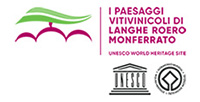
Leonardo Bistolfi - Biography

Leonardo Bistolfi was born in Casale Monferrato on the 15th of March in 1859. His father, Giovanni, was a sculptor and wood carver. Leonardo won a scholarship from the city of Casale Monferrato in 1874 to attend the Brera Academy in Milan. He shared the experience of the turbolent times in the city with his classmates Segantini, Previati and Sottocornola. Wanting to study with the sculptor Odoardo Tabacchi, he moved to Turin, and immediately began partecipating in the annual exhibitions of the Società Promotrice di Belle Arti with small groups of Verista inspiration (Boaro, Piove, Terzetto).
His original interpretation of the Simbolism poetic (of which Bistolfi is considered to be the biggest european sculptor) finds expression in huge funerary monuments. From the last decade of the 1800s there are works such as La sfinge (Cuneo), La bellezza della morte (Borgo San Dalmazzo), Il dolore confortato dalle memorie (Torino) and the big commemorative monument for Giovanni Segantini La bellezza liberata dalla materia built in Saint-Moritz in 1906.
During this time period he was a member of many cultural clubs in Turin, sharing the socialist ideas of Giovanni Cena and the approach to positivist science of Cesare Lombroso.

- Leonardo Bistolfi, Gli Amanti
Bistolfi became the promoter and later vicepresident of the extremely important “Esposizione d’Arte Decorativa Moderna” in Turin in 1902, for which he supplied the design for the manifest.
At the IV Esposizione Internazionale della Città di Venezia in 1905, he had his own room where he displayed over 20 works, including the plaster of the grandiose entrance for the Hierschel De Minerbi chapel, Il funerale di una vergine , for which he obtained the gold medal for Sculpture. In 1908 he was commissioned “for obvious merits” by the Bologna municipality to commemorate the poet Carducci with a big marble structure.
This specific work will occupy the artist for twenty years. After that, he completed the Il sacrificio for the Monument to Vittorio Emanuele II in Rome. He was previously part of the commission on the project but resigned due to conflicts about the overall setup of the piece.
During the 1920s, Bistolfi created the extraordinary Monumento a Garibaldi in Savona, the Monumento ai Caduti in Casale Monferrato and the Monumento ai Caduti in Turin. Of this last work, he made the sketches and part of the models but he could not complete it because of his sudden death in September of 1933.

